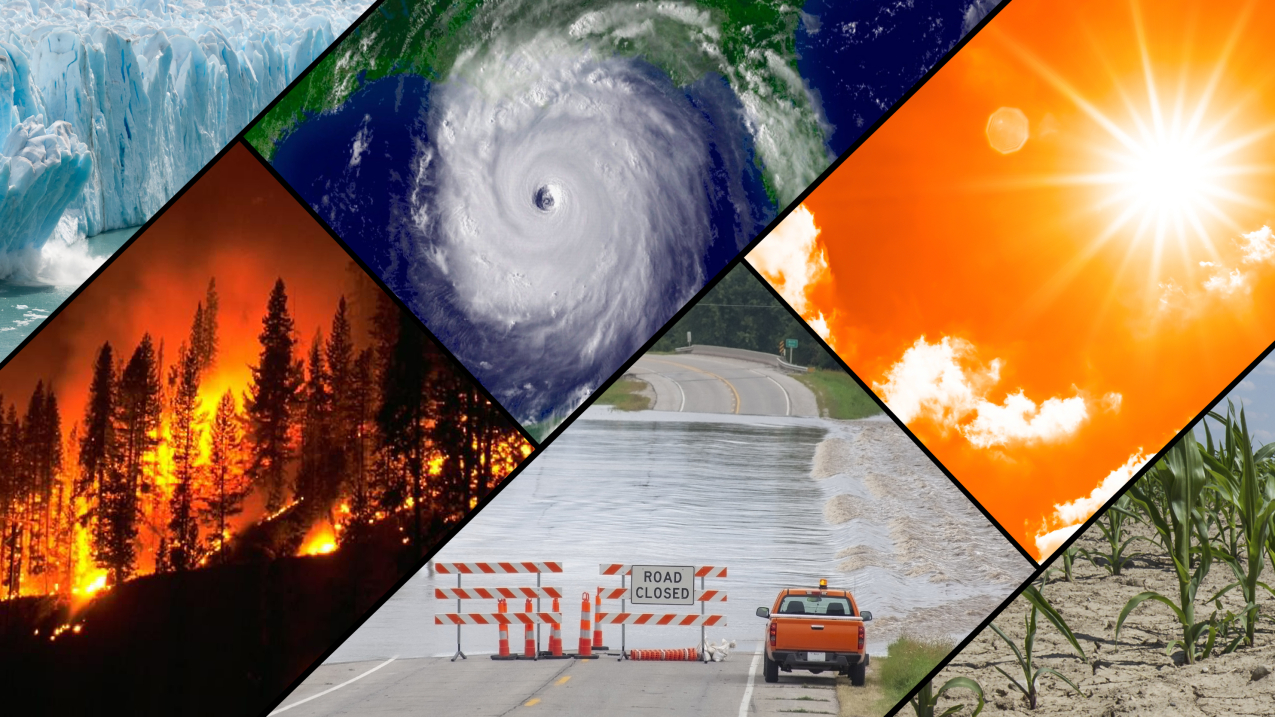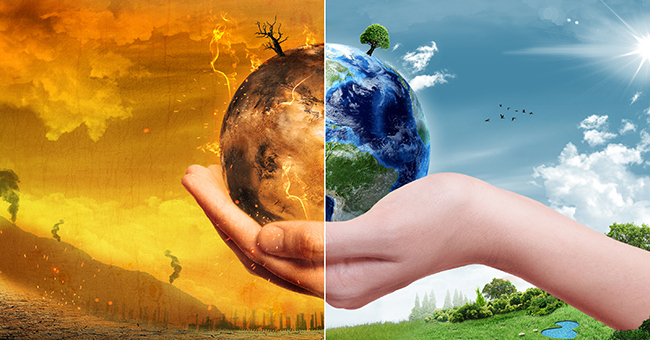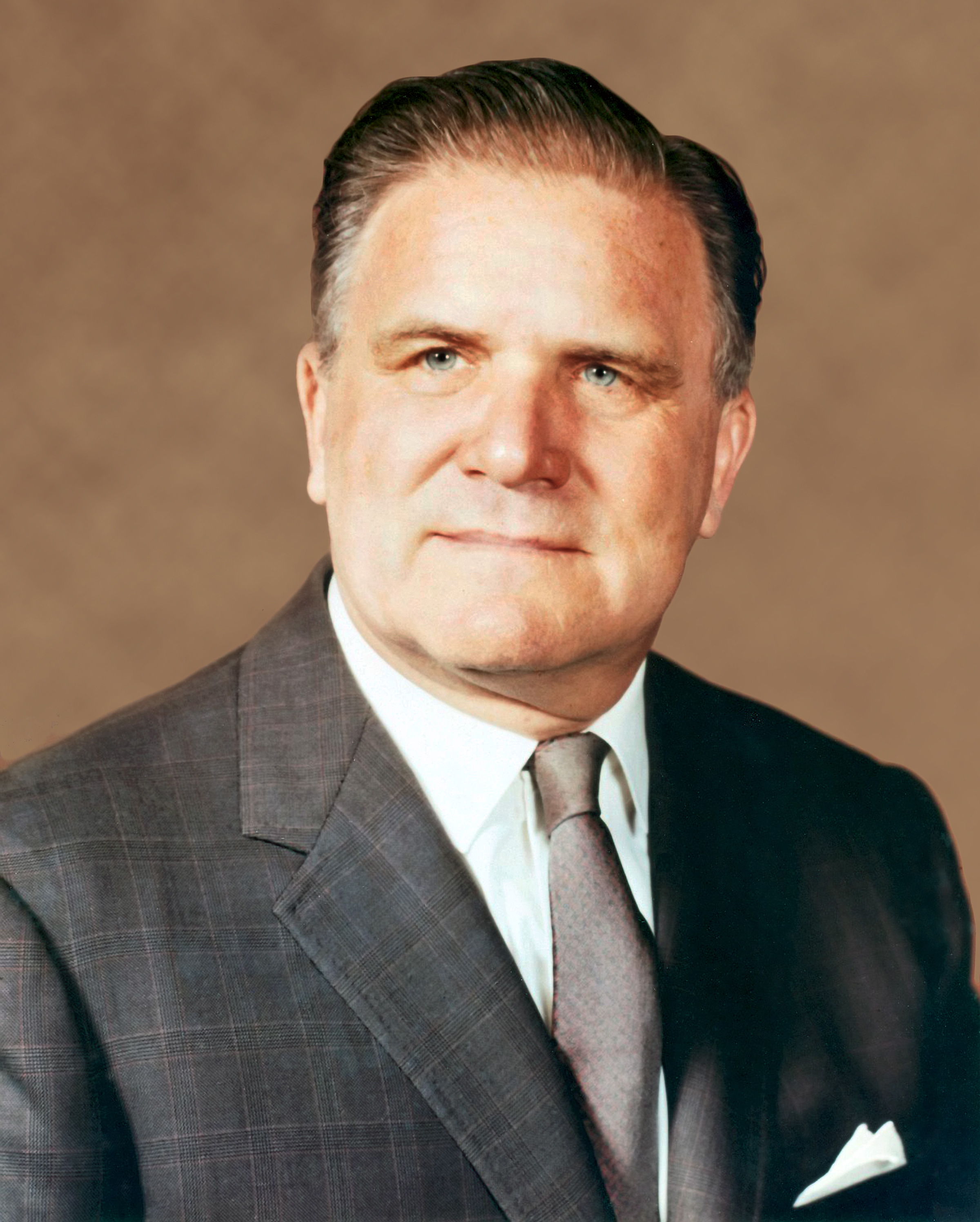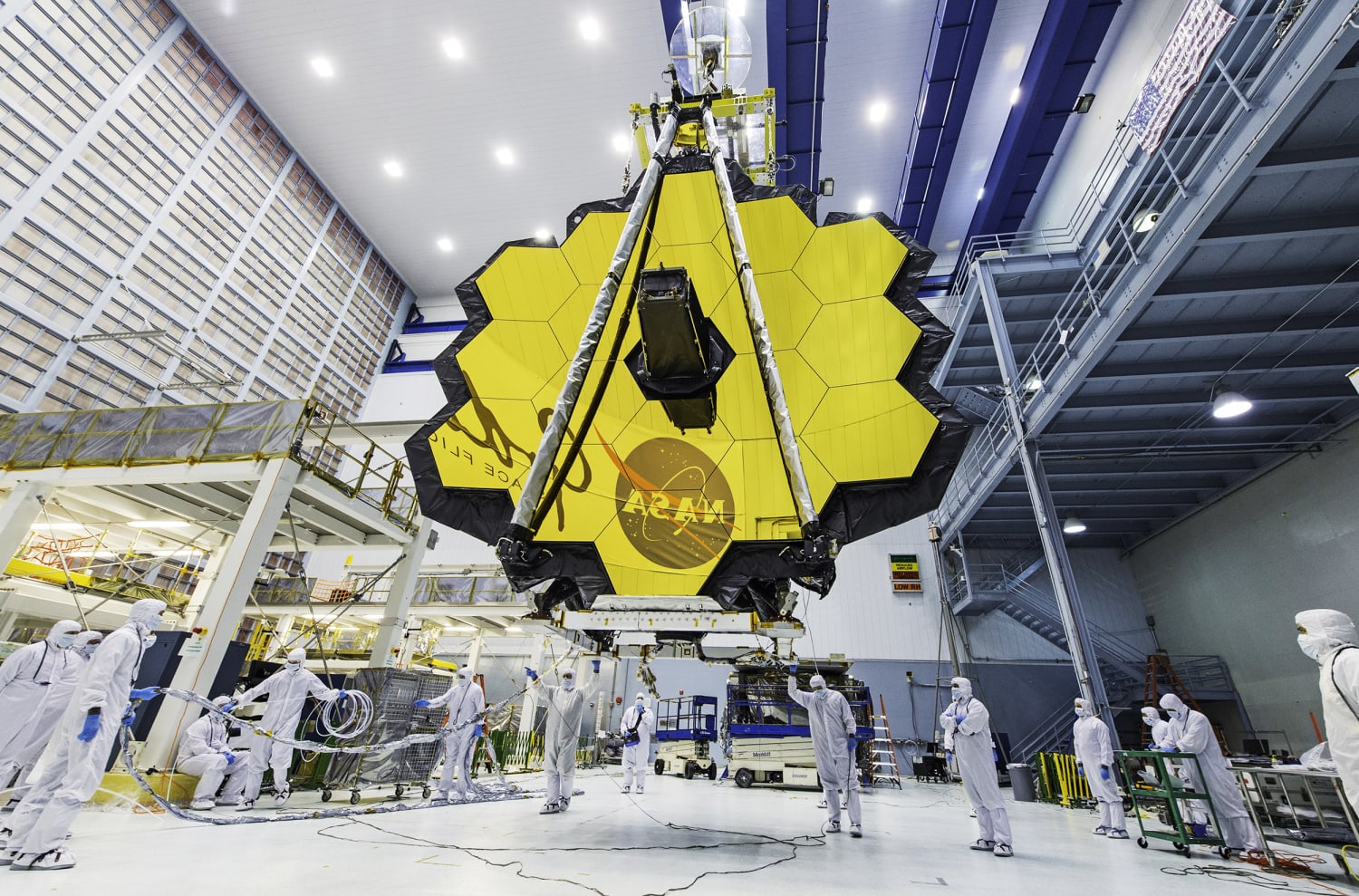






WASP-96 b ကတော့ ကမ္ဘာကနေ အလင်းနှစ်ပေါင်း ၁၁၂၀ ခန့်မှာ တည်ရှိပြီး ဓာတ်ငွေ့လုံးဂြိုဟ်တစ်ခု ဖြစ်ပါတယ်။ ဒြပ်ထု အားဖြင့် ဂျူပီတာ ဂြိုဟ် ရဲ့ တစ်ဝက်ခန့် ရှိပြီး WASP-96 အမည်ရှိ သူ့ရဲ့ မိခင်ကြယ် ကို ၃.၅ ရက်မှာ တစ်ကြိမ် လှည့်ပတ်နေပါတယ်။ WASP-96 b ရဲ့ အပူချိန်ဟာ 1000 degrees F (537 degrees C) ရှိပြီး ကျွန်တော်တို့ နေအဖွဲ့အစည်းထဲမှာ ပါဝင်တဲ့ ဂြိုဟ်တွေ ထက် ပိုမိုပူပြင်းပါတယ်။ ( WASP-96 b ကို Wide Angle Search for Planets(WASP) မြေပြင်အခြေစိုက် တယ်လီစကုတ်ကို အသုံးပြုပြီး ၂၀၁၃ ခုနှစ်မှာ ရှာဖွေတွေ့ရှိခဲ့တာပါ။ ယခု Webb's Telescope က နေထုတ်ပြန်လိုက်တဲ့ အချက်အလက်တွေ အရ WASP-96 b ရဲ့ လေထု ထဲမှာ ရေမှုန်ရေမွှားတွေကို တွေ့ရှိရပါတယ်။ ဒါ့အပြင် မြူခိုးငွေ့တွေ နဲ့ တိမ်တွေ လဲ ရှိတယ်ဆိုတဲ့ သက်သေ အထောက်အထားတွေ ကို တွေ့ရှိရပါတယ်။ ဒီအချက်အလက်တွေ ကိုတော့ Webb's Telescope ကနေ ရရှိတဲ့ WASP-96 b ရဲ့ ရောင်စဉ်တန်း ကို လေ့လာခြင်းအားဖြင့် သိရှိနိုင်တာဖြစ်ပါတယ်။

Carina
Nebula ဟာ ကြယ်တွေ မွေးဖွား ရာ နက်ဗျူလာ တစ်ခုဖြစ်ပါတယ်။ ကမ္ဘာကနေ
အလင်းနှစ် ၈၅၀၀ ခန့် အကွာအဝေးမှာ တည်ရှိပြီး ကျွန်တော်တို့ နဂါးငွေ့တန်း
ဂလက်ဆီ ထဲမှာ အကြီးမားဆုံး အလင်းလက် ဆုံး သောကြယ်တွေ မွေးဖွားရာ
နေရာဖြစ်ပါတယ်။ Trumpler 14 အမည်ပေးထားတဲ့ ကြယ်စုကတော့
ရှာဖွေတွေ့ရှိ ထားသမျှ ကြယ်စုတွေ ထဲမှာ သက်တမ်းအငယ်ဆုံး ထဲပါဝင်တဲ့ ကြယ်စု
ဖြစ်ပါတယ် Trumpler 16 ကြယ်စုထဲ မှာ ပါဝင်တဲ့ WR 25 အမည်ရှိ ကြယ်ဟာ
ကျွန်တော်တို့ နဂါးငွေ့တန်း ဂလက်ဆီ မှာ အလင်းလက်ဆုံးသော ကြယ်ဖြစ်ပါတယ်။
Webb's Telescope က ရရှိတဲ့ပုံအရ ယခင် က မမြင်ရတဲ့ ဖုန်မှုန့်တွေလဲ
ဖုံးကွယ်နေတဲ့ ကြယ် ရာဂဏန်း ကို လဲ ထပ်မံတွေ့ရှိခဲ့ရပါတယ်။
ဒါ့အပြင်
Carina Nebula ထဲမှာပါဝင်တဲ့ Eta Carinae အမည်ရှိ ကြယ် ၂ လုံးပါ ကြယ်
အဖွဲ့အစည်း ဟာ အလွန်ဒြပ်ထု များပြားတဲ့ ကြယ်တွေဖြစ်ပြီး နေ ထက် အဆ ၁၀၀
ခန့်ပိုမို ဒြပ်ထု များပါတယ်။။ ၂ လုံးပေါင်း လင်းလက်မှု (Luminosity) ဟာ
ကျွန်တော်တို့ နေရဲ့ အဆ ပေါင်း ၅ သန်းထိ ရှိပါတယ်။ Eta Carinae ဟာ ၁၈၃၇
ခုနှစ် မှာ အလွန်ကြီးမားတဲ့ ပေါက်ကွဲမှုကြီး ဖြစ်ပေါ်ခဲ့ပြီး ကျွန်တော်တို့
ည ကောင်းကင်မှာ ဒုတိယ အလင်းလက်ဆုံး ကြယ် အဖြစ်မြင်တွေ့ခဲ့ရပါတယ်။
နက္ခတ္တဗေဒဆိုင်ရာ အချိန်တိုင်းတာမှု အရ နောက်မဝေး တော့တဲ့ အချိန်တစ်ခုမှာ
Eta Carinae ထဲမှာပါဝင်တဲ့ ကြယ် ၂ လုံး ဟာ အချင်းချင်း လှည့်ပတ်နေရာ က နေ ၂
ခု တိုက်မိ မှာဖြစ်ပြီး ထိုအချိန် ကျရင် ကျွန်တော်တို့ ဟာ Eta Carinae ကို
ည ကောင်းကင်မှာ လပြည့်နေ့ လ အလား မြင်တွေ့နိုင်မှာဖြစ်ပါတယ်။
Carina
Nebula ဟာ ကျွန်တော်တို့ မြင်တွေ့နေကျ နက်ဗျူလာတစ်ခု ဖြစ်တဲ့ Orion Nebula
ထက် ၅ ဆ ခန့် ပိုမိုဝေးကွာပေမယ့် အရွယ်အစားအားဖြင့် ၄ ဆခန့်
ပိုမိုကြီးမားကာ ပိုမိုတောက်ပတာကြောင့် သူ့ကို မြင်ရတဲ့ ကမ္ဘာ့တောင်ဖက်
ခြမ်းနိုင်ငံတွေ မှကြည့်ပါက Orion Nebula ထက် ပိုမို ထင်ရှားစွာ
သာမန်မျက်စိ နဲ့ မြင်နိုင် မှာပါ။

ဒီ နက်ဗျူလာ ကိုတော့ Southern Ring Nebula လို့ခေါ်ပါတယ်။ ကြယ် တစ်လုံး သေဆုံးရာကနေ ဖြစ်ပေါ်လာတဲ့ Planetary Nebula အမျိုးအစား နက်ဗျူလာ တစ်ခုဖြစ်ပါတယ်။ ကမ္ဘာ ကနေ အလင်းနှစ် ၂၀၀၀ ခန့်မှာ တည်ရှိပြီး အလင်းတောက်ပစွာ တည်ရှိတာကြောင့် လေ့လာမှုတွေ များစွာ ပြုလုပ်နေတဲ့ နက်ဗျူလာ တစ်ခု ဖြစ်ပါတယ်။ အရွယ်အစား အားဖြင့် အချင်း အလင်းနှစ် ထက်ဝက် ခန့်ရှိပြီး သေချာစွာ ကြည့်မယ်ဆိုပါက ဒီ နက်ဗျူလာ ကွင်း ထဲမှာ ကြယ် ၂ လုံးပါဝင်ပါတယ်။ ယခင်ထဲက ဒီနက်ဗျူလာထဲမှာ ကြယ် ၂ လုံးပါတာကို သိရှိပေမယ့် ယနေ့ Webb's Telescope ကနေ ရရှိတဲ့ ပုံမှာတော့ ကြယ် ၂ လုံး လုံးကို သေချာစွာ မြင်တွေ့နိုင်ပြီ ဖြစ်ပါတယ်။ ကြယ် ၂ လုံးအနက် အနီရောင် သမ်းနေတဲ့ ကြယ် က တော့ သေဆုံးခါနီး ကြယ်ဖြစ်ပြီး ဖုန်မှုန့်တွေ နဲ့ ဖုံးလွမ်းနေတာကြောင့် မြင်တွေ့နိုင်ဖို့ ခက်ခဲပြီး အနီရောင် အဖြစ် မြင်ရတာ ဖြစ်ပါတယ်။ ဒီနက်ဗျူလာ ဖြစ်ပေါ်စေတဲ့ သေဆုံးခါနီး ကြယ် ဟာ သူ့မှာပါဝင်တဲ့ ဓာတ်ငွေ့တွေကို တစ်စက္ကန့် ကို ၉ မိုင်နှုန်း အလျင်နဲ့ လွှတ်ထုတ်လိုက်တာကြောင့် ယခု လို ဘေးပတ်ပတ် တည်မှာ ကွင်း အဖြစ် မြင်ရတာပါ။

ပုံ
ပါ ဂလက်ဆီ အစုအဖွဲ့ကို Stephan's Quintet လို့အမည်ပေးထားပါတယ်။ ၁၈၇၇
ခုနှစ်မှာ ပြင်သစ် နက္ခတ္တဗေဒပညာရှင် Édouard Stephan က
စတင်တွေ့ရှိခဲ့တာဖြစ်ပြီး ယခုလို ဂလက်ဆီ အစုအဖွဲ့တွေ ထဲမှာ ပထမဆုံး
ရှာဖွေတွေ့ရှိခဲ့တဲ့ အစုအဖွဲ့လဲ ဖြစ်ပါတယ်။ ဒီအစုအဖွဲ့ထဲမှာ ဂလက်ဆီ ၅
ခုပါရှိပါတယ်။ Quintet ဆိုတာ ငါးဦး ပါဝင်တဲ့ အစုအဖွဲ့ ကို
ခေါ်ဆိုတာဖြစ်ပါတယ်။ ဒါပေမယ့် ယခု ပေးထားတဲ့ နာမည် က အမှန်တကယ်ဖြစ်ပေါ်တဲ့
အခြေအနေ နဲ့ အနည်းငယ်တော့ ကွာခြားနေတာပါ။ ယခု ဂလက်ဆီ ငါးခု အစုအဖွဲ့ထဲမှာ
ပါတဲ့ ဘယ်ဖက်အပေါ်နားမှာရှိတဲ့ NGC 7320 ဂလက်ဆီ ဟာ ကျန် ဂလက်ဆီ လေးခုထက်
ကမ္ဘာ နဲ့ ၇ ဆ ကျော် ပိုမို နီးတာဖြစ်ပါတယ်။ ကမ္ဘာကနေ မြင်ရတဲ့
မြင်ကွင်းထဲမှာ ပါနေတာကြောင့် သာ ဂလက်ဆီ ၅ ခုပါတဲ့ အစုအဖွဲ့ အနေ နဲ့
ခေါ်ဆိုကြတာဖြစ်ပါတယ်။ ကျန် ဂလက်ဆီ ၄ ခုထဲ က ၃ ခုဟာ ပုံမှန်မဟုတ် တဲ့
ပုံသဏ္ဍန် ရှိပြီး ရှည်မြောမြော ဖြစ်နေတဲ့ ခရုပုံ သဏ္ဍန် လက်တံတွေ
ရှိပါတယ်။ ဒီအချက်ကို ကြည့်ခြင်းအားဖြင့် ဒီဂလက်ဆီ တွေဟာ တစ်ခုနဲ့ တစ်ခု
အချင်းချင်း ဆွဲငင်နေကြတာကို တွေ့ရမှာဖြစ်ပြီး နောက်တစ်ချိန် မှာ ဒီဂလက်ဆီ ၄
ခုဟာ တဖြည်းဖြည်း ပေါင်းစပ်သွားပြီး ဂလက်ဆီ အကြီး တစ်ခုဖြစ်ပေါ်သွားမှာ
လဲဖြစ်ပါတယ်။ ဒီအစုအဖွဲ့ထဲ က NGC 7320 ဟာ ကမ္ဘာကနေ အလင်းနှစ် သန်း ၄ဝ
ကွာဝေးပြီး ကျန် ဂလက်ဆီ ၄ ခုကတော့ အလင်းနှစ် သန်းပေါင်း ၂၉ဝ ခန့်မှာ
တည်ရှိနေကြပါတယ်။
ယခုပုံ ကို တော့ ကမ္ဘာကနေ မြင်ရတဲ့ လပြည့် ရဲ့
၅ပုံ ၁ ပုံ အချင်း အရွယ်အစား ရှိတဲ့ ကောင်းကင် ဧရိယာ ကို
ရိုက်ယူထားတာဖြစ်ပါတယ်။ ဒီပုံဟာ ပုံပေါင်း ၁၀၀၀ ခန့်
ပေါင်းစပ်ထားတာဖြစ်ပြီး စုစုပေါင်း 150 Million Pixels ရှိပါတယ်။ ယခုလို
အသေးစိတ် ပါဝင်တဲ့ ပုံတွေ ကို လေ့လာခြင်းအားဖြင့် စကြ၀ဠာ ထဲ က ဂလက်ဆီ တွေ
ဘယ်လိုဖြစ်ပေါ်လာတာလဲ ဆိုတာနဲ့ နောင်အနာဂတ်မှာ ဘယ်လိုတိုးတက်ပြောင်းလဲ
လာမယ်ဆိုတာကို လေ့လာရာမှာ များစွာအထောက် အကူပြုမှာဖြစ်ပါတယ်။







Our universe is a wild and wonderful place. In this season, we’ll learn about lunar mysteries, break through the sound barrier, and search for life among the stars. First-time space explorers welcome.
Episode Description:
From dusty deserts to icy mountain tops, NASA experts visit incredible places along their career path. But what about our explorers who take their work off the Earth? Join astronaut Shannon Walker on a look back at her excursions into space.
Song: Onto a Breakthrough Underscore by Stroud]
HOST PADI BOYD: Snowy vistas, the Australian outback, and far beyond our atmosphere - NASA experts travel to some incredible places to learn more about our universe.
HOST PADI BOYD: As scientists have started venturing out once again, we are re-starting our “Field Notes” series. These special episodes offer a look into the people and places behind some of the wild work NASA experts do … beyond our offices!
HOST PADI BOYD: Astronaut Shannon Walker has traveled to the International Space Station twice in her incredible career. She’s now back on Earth with a unique perspective!
HOST PADI BOYD: From her home state of Texas, to floating far above the atmosphere, and so many destinations and adventures in between … come along with us, as Shannon describes just a few of her out-of-this-world experiences!
Shannon Walker
Space Station in so many ways felt exactly the same when I was there the second time as I was the first time. The difference, however, was there is so much more stuff on the space station. I swear everybody on the ground acts like they're a pack rat and don't want to get rid of anything…
[[Sounds from International Space Station: computer whizzing, exercise machine, light piano playing and chatting]]
Shannon Walker
And so we've got cargo stowed everywhere and, and we've installed so many computers. And so we've got wires strung everywhere and cables and everything. And so it's a more crowded space, but a very familiar space to live.
[Song: Common Bond Underscore by Levesque]
Shannon Walker
My name is Shannon Walker and I am a NASA astronaut.
Shannon Walker
I have flown to the space station twice. The first time I flew was in 2010. And the second time I flew, I launched, the end of 2020 and landed in 2021. So I've been home just over a year from my last flight.
Shannon Walker
First time I flew, I actually flew round trip with the Russians. I was trained as the pilot, essentially, the pilot seat on the Soyuz spacecraft. I spent a lot of time over in Russia training for that flight. I spent a lot of time in this country training for what we were going to do on space station. I spent a lot of time in all our international partner countries: Canada, Europe, and Japan. So that whole training part took roughly three years before I flew a six month mission.
Shannon Walker
When I was on the space station at that time, we were just finishing up the building of the space station and transitioning into all the science that we're doing up there now. It was kind of a mix of maintenance and making sure the space station was ready for all the science and then just starting to do some of the initial long term science we were doing.
Shannon Walker
Fast forward, it didn't seem very fast, but fast forward 10 years later for my second flight. And I was able to travel to and from the space station on the Crew-1 SpaceX Dragon. That was their first time they sent people to the space station, for six months, and so I was part of that crew.
[[Space-X Crew Announcement: At 7:27 p.m. eastern time this evening, NASA astronauts Mike Hopkins, Victor Glover, Shannon Walker and Japan Aerospace Exploration Agency Astronaut Soichi Noguchi… will lift off from this historic launch complex, 39A, at NASA’s Kennedy Space Center and begin their six month journey…]]
Shannon Walker
We did a lot of training ahead of time, although COVID had just hit the world. And so training was very, very different. We've gotten quite a bit smarter and how we need to train people for Space Station. And so instead of three years, if it's a normal expected training flow, we're talking about a year and a half, two years depending on which position you have within a capsule. And then train some for what you're doing on station.
Shannon Walker
Now it was mostly science because we've got Space Station built up and running. And so a lot of my time up there was doing all the research that needs to be done.
[Song: A Fresh Start Instrumental by Russell]
Shannon Walker
There's so many things that are so neat and so fascinating about living on the space station. You have to go back and think, wow, how normal it feels to be in space. That's what strikes me that, once you're up there, and you've been there for a short while you realize how normal it is to float all the time: to float in your sleeping bag when you're sleeping at night, to get out and to float while you're putting on your clothes and float down to have breakfast with your crewmates. I mean, it just, it just becomes a normal way to approach your day. And that still fascinates me that you get to do that and it just feels normal.
Shannon Walker
Beyond that, some of my favorite activities, you know of course, looking out the window. It never gets tired, to look at the Earth and there's always something to see. On the space station we have a place that we call the cupola and its the best thing ever because it is a set of windows that are on what you would call the bottom of the space station so they are facing Earth and you can have this wonderful 360 degree view of looking at the Earth. So it's not like looking out a window on an airplane or something, you get to look down at everything and it was just so amazing to see the beauty of the Earth.
Shannon Walker
My first flight was over a summer time period, I launched in June, came home in November. Second flight launched in November, came home at the beginning of May, so I had all the seasons.
Shannon Walker
The first time, the northern hemisphere … spring/summer, green. You could see everything. Second time … it was winter in the Northern Hemisphere. And so, everything is frozen and how much ice and snow is everywhere was just, it was interesting because I don’t live where it snows, Houston, it doesn’t snow normally. But to see it from above and to see how much of the Earth is just covered with snow and ice, was really interesting.
Shannon Walker
Looking out the window at night is absolutely fascinating because it has always struck me how many lightning storms are going on all around the planet all the time, and especially the middle North of Africa. Africa has got the most amazing thunderstorms ever. And every night if you fly over Africa, you can just see lightning going off all over the place. It's fascinating and really cool to watch.
Shannon Walker
Earth during the day is great, because you can see what's going on with the rivers and the oceans and things. And then at night, you really get to see not just the spectacular shows of lightning, but you can tell where people are, you can tell where people don't live and all the city lights and the little roads connecting all the cities, I mean, it's just a fascinating place to look at.
Shannon Walker
…You can see how tiny our atmosphere is. And it's just this little tiny band that you see on the edge of the Earth. It drove home…to me, it reinforced really how fragile our Earth is, looking at how tiny, how thin our atmosphere is. You know, Earth’s big, compared to our atmosphere for sure.
[Song: Human Endeavour Instrumental by Grim]
Shannon Walker
I would love to talk about launches because those are so awesome. They are amazing!
Shannon Walker
So it takes about eight and a half minutes to get into space. Now think about that, eight and a half minutes! You're sitting on a launch pad. Eight and a half minutes later, you're in space. That means that you are going to be moving fast.
Shannon Walker
If you're in the launch pad, you don't get a countdown, there's nobody in your ear saying three two one launch, you're just watching a little timer.
[[Launch sounds]]
[[Timer clicking, heavy breathing]]
Shannon Walker
Right before T zero happens, fuel starts flowing. You hear some stuff, you're on top of all this fuel, you know stuff is flowing, you got these engines, you hear some rumbles you can kind of feel valves moving. So there's some vibrations, and there's some noise. And then, okay, the engines have lit and big rumbles start happening. And you can tell you are moving up, you are starting to get faster and faster and faster. And you know that not just by the noise, you know that because of the G loads that your body experiences.
Shannon Walker
We're sitting just so in the spacecraft, so you feel the G loads perpendicular to your chest. So it feels like somebody is sitting on your chest, it makes it a little hard to breathe. On the Soyuz, they have a three stage rocket. You go up a little ways and then they get rid of the first stage. So you sort of hear and feel these explosions, but the central core of the rocket is still going so the engine is still going and you're getting faster and faster and faster. On the Soyuz, you will get about four and a half G's. So get a couple of your friends to sit on your chest. And that's what four and a half G's feels like.
Shannon Walker
And then at the end of that, it's into the second stage. There's this explosion that you feel where they get rid of the second stage behind you. There's a few seconds and then the third stage lights and you're always like, ‘Okay, is it gonna light is it gonna light?’ Believe me, you know when it lights because then you start moving again really fast. And so you ride that all the way into space on the Soyuz spacecraft, but the G loads don't get nearly as high again.
Shannon Walker
On the Dragon, you’ve got two stages. And so the first stage goes up, and they throttle their engines to maintain the G load between three and 3.3 G's on the first stage. And they do this to make sure that basically you're not going to shake anything apart.
Shannon Walker
You do that for a while, and then that stage cuts off, explosions, and then the second stage lights. There is a bigger pause between the first stage and the second stage on the Dragon than there is between the second stage and the third stage on the Soyuz and so the Commander, Mike Hopkins, and I both had flown on a Soyuz before and so we're like, ‘Is it gonna light … is it gonna light?’ and eventually it does. And boy is that a kick in the pants.
Shannon Walker
By the end, it felt like I was in this little cartoon, you know, cartoon characters are going really fast and their faces are being smushed back. And that's what I felt like. But then engine cuts off and boom, you're in space, for both of them, at the end. As soon as the last engine cuts off, you're floating around. And it's pretty amazing that eight and a half minutes: lot of noise, lot of rumbles, a lot of fun.
[Song: Epic Horizons Underscore by Cacace Castellarin]
Shannon Walker
I was born and raised in Houston. And so I did grow up with the space program, the human spaceflight program in my backyard. What really sparked my imagination as a kid was our first moon landing,
[[Archival: Okay Neil, we can see you coming down the ladder now…]]
[[Beeping]]
Shannon Walker
…I have these memories of my parents taking me and my older sister out into the backyard, and the moon was coming up over our roof, and then pointing up there and saying, ‘We have people there.’ And at four years old, I was like, ‘Wow, that just sounds like the neatest thing ever. And that's what I want to do.’
[[Archival: That’s one small step for a man… one giant leap for mankind…]]
Shannon Walker
I get to tell that story, just about every time I'm interviewed by somebody. I think it's neat because it really shows how some small thing or big thing or something in somebody's childhood, can really set a path and a dream that you don't know how you may end up there, you know, you may not ever end up at that particular final destination. But it's something to work towards. And it's something to sort of provide direction, I guess, in somebody's life.
Shannon Walker
It's important to know these big things that we do, these big, huge, important things that benefit society, take a long time. And it can take a long time to get there. But it's worth the effort. It's science. It's helping the world understand its place in the universe and helping people and society with technology just keep moving forward. And so, it’s fascinating.
Shannon Walker
Any kid that wants to be part of NASA, I really encourage you to follow that dream and passion. And I also want to point out NASA does so many things. It's not just the astronauts, it's not always the science and engineers. If there is something you want to do in life, we're doing it at NASA, I can guarantee you.
Shannon Walker
I mean, we have photographers that work for NASA, we have scuba divers that work for NASA that help us prepare for spaceflight. We've got all the technicians, we've got people that sew our spacesuits, I mean, it's just amazing the breadth of jobs available at NASA and there's so many ways to be part of it, even if you don't want to or don't have the opportunity to go into space.
Shannon Walker
…My pitch for come work for NASA!
HOST PADI BOYD: Shannon has spent a career total of 331 days in space. Since her second trip, we’ve kept her busy … training the next class of astronauts, assisting with launches and landings, and helping out with future missions, from trips to the space station and the Moon, looking all the way to Mars.
HOST PADI BOYD: SpaceX also recently named a new recovery vehicle in her honor. “The Shannon” and “The Megan”, named for astronaut Megan McArthur, are ships that assist in picking up our astronauts once they splashdown back to Earth.
HOST PADI BOYD: Thank you Shannon, for your hard work and for sharing your stories with us!
[Song: Curiosity Outro by SYSTEM Sounds]
HOST PADI BOYD: This is NASA’s Curious Universe. This episode was written and produced by Christina Dana. Our executive producer is Katie Atkinson. The Curious Universe team includes Maddie Arnold and Micheala Sosby with support from Erica Kriner.
HOST PADI BOYD: Special thanks to Courtney Beasley, Megan Dean, John Stephen and the Johnson Space Center team.
HOST PADI BOYD: If you liked this episode, please let us know by leaving us a review, tweeting about the show @NASA, and sharing NASA’s Curious Universe with a friend.
HOST PADI BOYD: Still curious about NASA? You can send us questions about this episode or a previous one and we’ll try to track down the answers! You can email a voice recording or send a written note to NASA-CuriousUniverse@mail.NASA.gov. Go to nasa.gov/curiousuniverse for more information.
HOST PADI BOYD: And, remember, you can “follow” NASA's Curious Universe in your favorite podcast app to get a notification each time we post a new episode.
Shannon Walker
And then I ended up leading a group of engineers that are in the control center daily, you never see them on TV, but they are responsible for the technical health of the space station is how we would put it. Anything that breaks on the space station, we got to figure out how to fix it. That was an awesome challenge to do a whole bunch of problem solving in the early days of the space station, and just figure out how it's going to work.
Producer Christina Dana
You were the Houston in ‘Houston we have a problem’!
Shannon Walker
[Laughs] I was, I was! I often tell people that if they've seen the movie, Apollo 13, where they have the problem and these people in a room and they dump a bunch of equipment out and they say ‘we need to make a round one of these fit into a square one of those.’ That is exactly what we were doing. It's like, okay, what went wrong? What do we have on Space Station to fix it? What do we need to launch? If we can launch something? What do we need to reprogram? That is exactly what I would do. It was great.
Last Updated: Jul 6, 2022
Editor: Gary Daines
Tags: Curious Universe, Goddard Space Flight Center, Podcasts, Space Station Research and Technology
Download Podcasts :
https://www.mediafire.com/file/0mmsxkkhwcv8q3y/NASA%2527s_Curious_Universe.mp3/file
#Credit

မိုးလေဝသ နှင့် ရာသီဥတု (Weather and Climate) ဒီမှာတစ်ခုမေးစရာရှိပါတယ် ။ ဒီလောက်တောင် ရာသီဥတု ပြောင်းလဲတာတွေပြော ၊ တွက်ချက်တာတော်နေတဲ့ သိ...
